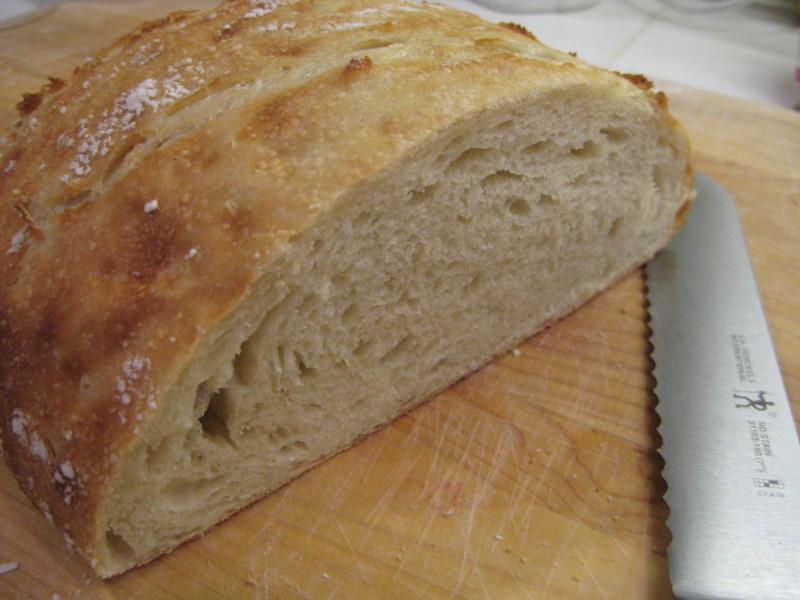I think the title says it all. After having read The Bread Baker’s Apprentice: Mastering the Art of Extraordinary Bread, by Peter Reinhart, I really started making some tasty breads. I have tried the Pain a l’Anciene, the amazing Pizza Napoletana, Foccacia, Pugliese, Anadama bread, and Multi-grain Bread Extraordinaire. They were all very wonderful (and I plan on continuing to make them) but I was left feeling somewhat unfulfilled. For several reasons: I want to eat healthy, and too much white bread is not good for the body; I have more whole grains on hand than white flour and it would be nice to know how to make tastier breads with just the whole grains; people before G.A. Bockler survived without white flour, why can’t I?
I found my answer when bumbling around on Amazon, looking for things to round out my wishlist. I was rating items so Amazon could give me better suggestions of things I might like (which it does a fairly poor job at), when I came across Peter Reinharts’s Whole Grain Breads: New Techniques, Extraordinary Flavor. Wow! Does he ever deliver. I love the science of bread that he puts into his books. Not being a chemist, I think the actual chemistry behind all the reactions in the dough is a little beyond me, bit the deconstruction of the bread, the nitty-gritty how it works is what really intrigues me. I am an engineer. I love to take things apart and see what makes them tick. When things are broken, I want to fix them. I have a deep need to see how the puzzle fits together.
Yesterday I made four loaves of 50-50 wheat/white bread from the recipe that my mother-in-law uses. It is a very tasty recipe that I have been using for the past 5 years. My technique has gotten better and I think the four loaves from yesterday were the most uniform and best tasting loaves I have made from that recipe. But it still bugs me that there is a requirement for 1 1/2 cups of white flour per loaf. I have tried substituting whole wheat flour for the white flour to varying degrees of success, but it never turns out as good as the original recipe. It is always more dense and the flavor isn’t quite right either. I even took the advice of one recipe book that said to use less wheat flour when substituting and also increase the leavening to compensate. But it still wasn’t quite right.
Yesterday was also the day that my time on the library waiting list for “Peter Reinhart’s Whole Grain Breads: New Techniques, Extraordinary Flavor” was up and I got to take it home. Almost before the four loaves of bread were fully cooled (and one half eaten), I had read half the book and started on the first recipe, 100% whole wheat sandwich bread. Almost all the recipes in the book use two pre-doughs, a soaker and a biga. According to the science content in the book, the soaker provides flavor and a good environment for yeast production while the biga provides more flavor and the needed acidity to control the enzymes in the soaker before they do too much of a good thing. Put the two parts together, add a little more yeast for leavening and you have one tasty, tender bread. So today, after the soaker and biga had had plenty of time to do their parts, I finished the single test loaf. I just cannot get over how good that bread was. And that was my first shot at the recipe. Hold on while I drool as I imagine how good it will be after five years of practice….
I will certainly be back with more stories from my time in the kitchen.

